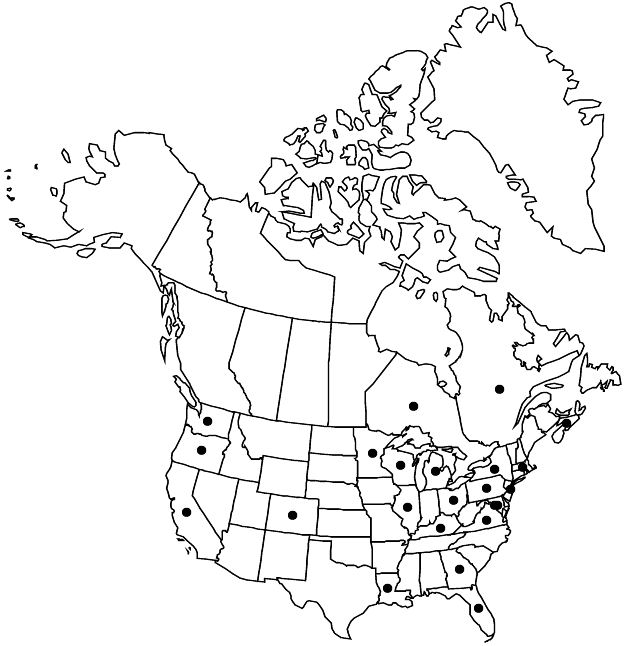Potentilla reptans
Sp. Pl. 1: 499. 1753.
Rootstocks erect, slender to stout, 2–6+ cm. Stems soon becoming prostrate, flagelliform, not branched, rooting at some nodes, 1.5–10+ dm. Basal leaves persistent, usually palmate, 3–12 (–30) cm; petiole 2–10 (–25) cm, long hairs sparse to abundant, tightly to loosely appressed, 0.5–1.5 mm, usually stiff, sometimes weak, glands absent; leaflets (3–) 5 (–7), central oblanceolate to obovate, (0.5–) 2–4 (–7) × 0.3–1.5 (–2.5) cm, distal ± 3/4 of margin incised 1/4–1/3 to midvein, teeth (3–) 4–12 per side, surfaces similar, green, sparsely to moderately hairy. Cauline leaves 2–3 (–4) proximal to 1st flowering node, usually well expanded at anthesis, usually palmate, 2–8 (–20) cm; petiole 0.5–6 (–15) cm; leaflets (3–) 5, ± resembling those of basal leaves, apex rounded to obtuse. Inflorescences solitary flowers at stolon nodes. Pedicels (2.5–) 4–12 (–15) cm. Flowers 5 (–10) -merous; epicalyx bractlets elliptic or oblong to ovate, 4–10 × 1.5–3.5 mm, often much larger than sepals (especially in fruit); hypanthium 4–7 mm diam.; sepals (3–) 5–7 mm, apex broadly acute to obtuse; petals 7–9 (–12) × 6–9 (–11) mm, apex usually ± retuse; stamens ca. 20, filaments (0.5–) 1–2.5 (–2.8) mm, anthers (1–) 1.3–2 mm; carpels 60–120, styles 0.6–1.3 mm. Achenes 1.3–1.6 mm, ± rugose. 2n = 28 (Eurasia).
Phenology: Flowering late Apr–Aug.
Habitat: Dry to moist lawns, roadsides, waste places, on non-acidic soil
Elevation: 0–500 m
Distribution

Introduced; N.S., Ont., Que., Calif., Colo., D.C., Fla., Ga., Ill., Ky., La., Md., Mass., Mich., Minn., N.J., N.Y., Ohio, Oreg., Pa., Va., Wash., Wis., Europe, w Asia, n Africa, Atlantic Islands (Azores), Atlantic Islands (Macaronesia), also in West Indies, Bermuda, South America, Africa (Ethiopia), Pacific Islands (New Zealand), Australia
Discussion
Potentilla reptans is becoming widely introduced in North America, though not fully naturalized in some of the states indicated here. It may be confused with P. canadensis and P. simplex, but, in addition to the characters highlighted in the key, P. reptans tends to have more crenately toothed leaves than the more sharply toothed leaves of the native species. The plant has a history of medicinal uses similar to that of P. erecta. The cultivated double-flowered form is sometimes found established in weedy places.
Selected References
None.
Lower Taxa
"thin" is not a number."(" is not declared as a valid unit of measurement for this property."dm" is not declared as a valid unit of measurement for this property."dm" is not declared as a valid unit of measurement for this property.